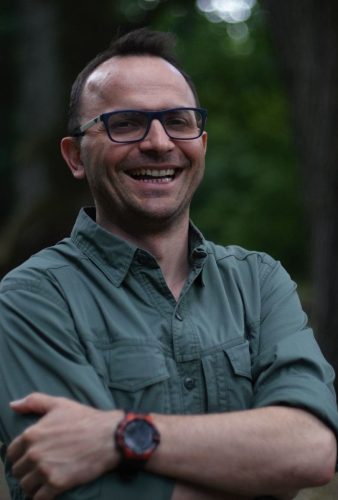- Academic title:
- PhD
- Position:
- Adjunct
- Unit:
- Population Ecology

- PhD: 2015, Warsaw University, Biology Department
- MSc: 2006, Swedish Agricultural University (SLU), Southern Swedish Forest Research Center, Alnarp
- MSc: 2004, Poznań University of Life Sciences, Department of Forestry Natural Foundation
- Community ecology
- Effects of large mammals on ecosystem functioning
- Plant-herbivore interactions
- Consumer-resource interactions
- Behavioural ecology
- Effects of predation on plant-herbivore interactions
- Experimental ecology
- Development of methods and applications to analyse, store and manage photo- and video-trapping data
Europe is currently experiencing a strong wildlife revival and populations of mammalian herbivores are increasing strongly. Although large mammalian fauna is suggested to be a central driver of ecosystem functioning, we actually have a very poor understanding of the impact of these increasing populations. How will increasing populations of mammalian herbivores shape the future European forest ecosystems? Most of the knowledge on consumer-controlled woody vegetation comes from southern hemisphere grasslands and savannas, where combined effects of fire and herbivory has been shown to shape the structure and function of this biome. This view acknowledges that in many parts of the world strongly contrasting vegetation states, open grassland or closed forest, may occur under the same climatic conditions. These areas are also termed ‘ecosystems uncertain', where ‘uncertainty' is attributed to the potentially strong, controlling role of biomass consumers in these ecosystems - fire and/or herbivores. In my research I attempt to understand what are the effects of top down forces, such as large herbivores and fires on woody vegetation in the temperate zone.
- September 2013-2015; MRI PAS. Co-investigator in the NCN project "Trophic cascades in European temperate forests; indirect effects of large carnivores on ungulate-tree interactions"
- September 2008 - September 2011 "Effects of shading on the resistance of tree saplings to browsing by ungulates in natural stands of Białowieża National Park"- project leader (the reference number: N309137335)
- January 2007 - December 2010 "Fire history and its influence on the present Bialowieza Primeval Forest structure." MRI PAS, Bialowieza. Co-investigator (the reference number: KBN N309 013 31/1718).
- July 2004 - June 2005; Alnarp, SLU. I was employed with the research project "Ålderstruktur och dynamik i Biskopstorp lövskogar" (Age structure and dynamics of deciduous forest in Biskopstorp, Sweden)
- August 2002 - June 2003 IKEA fellowship, 1 academic year course "Sustainable Forestry in the Baltic Sea Region", SLU Alnarp, Sweden.
- June - September 2001 Internship in Calaveras Big Trees State Park, California, USA.
- Forest regeneration and the limiting roles of light and large herbivores in the Białowieża Primeval Forest
- Trophic cascades in European temperate forests; indirect effects of large carnivores on ungulate-tree interactions